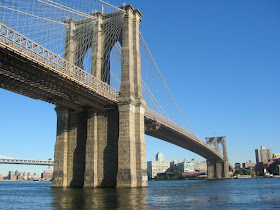In occasione dell'undicesimo anniversario degli attacchi dell'11/9 è stato pubblicato il volume No Easy Day, scritto da uno dei Navy SEAL che hanno partecipato alla missione che uccise Osama bin Laden nel maggio del 2011. Nel libro l'autore si nasconde sotto lo pseudonimo di Mark Owen, ma già prima della pubblicazione era noto il suo vero nome: Matt Bissonnette. La notizia è stata riportata da diverse testate autorevoli come Fox News e Reuters; inoltre secondo il New York Times l'identità dell'uomo sarebbe stata confermata anche da ufficiali militari e dal Department of Defense.
Dopo la pubblicazione del libro, l'autore è anche apparso a volto scoperto nella trasmissione televisiva di CBS 60 Minutes (da cui è tratto il fotogramma sottostante).
 Nella prima metà del libro, che ha come sottotitolo The Autobiography of a Navy SEAL, l'autore parla della propria carriera militare raccontando episodi di diverse missioni in Afghanistan e in Iraq.
Nella prima metà del libro, che ha come sottotitolo The Autobiography of a Navy SEAL, l'autore parla della propria carriera militare raccontando episodi di diverse missioni in Afghanistan e in Iraq.La seconda metà del volume è invece interamente dedicata alla missione che ha portato all'uccisione di Osama bin Laden e su questa rivela particolari poco noti. Bissonnette racconta, ad esempio, che le prime esercitazioni sono state condotte nel North Carolina dove era stato ricostruito a grandezza naturale il compound in cui si nascondeva bin Laden. Oppure che la prima identificazione di Osama fu più difficile del previsto per via del buio della notte a cui si aggiungeva un momentaneo blackout (non infrequente nella zona, secondo l'autore) e in quanto Osama si era tinto la barba di nero per sembrare più giovane e ingannare chi gli dava la caccia; in seguito nel compound fu trovata anche una confezione del colorante per capelli Just for Men che era stata evidentemente usata allo scopo.
 Il testo di Bissonette chiarisce anche il dettaglio dell'elicottero distrutto rinvenuto nelle vicinanze del compound. Il mezzo che trasportava il primo gruppo dei Navy SEAL si schiantò al suolo all'atterraggio, ma l'equipaggio riuscì comunque a uscirne indenne a condurre la missione come previsto. L'elicottero fu quindi intenzionalmente distrutto con una carica esplosiva al termine della missione.
Il testo di Bissonette chiarisce anche il dettaglio dell'elicottero distrutto rinvenuto nelle vicinanze del compound. Il mezzo che trasportava il primo gruppo dei Navy SEAL si schiantò al suolo all'atterraggio, ma l'equipaggio riuscì comunque a uscirne indenne a condurre la missione come previsto. L'elicottero fu quindi intenzionalmente distrutto con una carica esplosiva al termine della missione.Come riportato più volte dalla stampa, il libro è oggetto di animate polemiche. Il Dipartimento della Difesa degli Stati Uniti ha manifestato più volte il proprio dissenso con due articoli pubblicati sul sito ufficiale (primo, e secondo) in cui sostiene che il libro rivelerebbe informazioni riservate.
Inoltre l'Ammiraglio McRaven, organizzatore ed esecutore della missione, ha contestato il fatto che il volume conterrebbe una grave imprecisione. Bissonnette infatti racconta che bin Laden non avrebbe fatto il minimo tentativo di difendersi, mentre gli ufficiali del Pentagono hanno sempre sostenuto che Osama tentò disperatamente di raggiungere le armi che aveva in stanza. In realtà esiste una spiegazione semplice e plausibile: Bissonnette potrebbe non aver visto Osama compiere tale gesto in quanto lo vide solo da cadavere dopo che era stato ucciso da un altro Navy SEAL che lo precedeva.
Indipendentemente dalle polemiche suscitate, e in parte proprio per queste, il libro è molto interessante e, come è ovvio, riporta un'ulteriore voce che smentisce le assurde teorie del complotto secondo cui Osama bin Laden sarebbe morto anni prima in circostanze che nessun sostenitore di tali teorie ha mai saputo spiegare.










